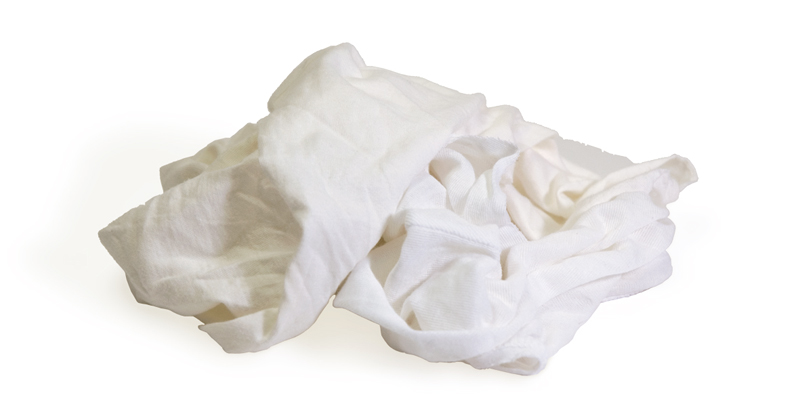Waste Cloth
ウエス
Uesu
CATEGORIES
Waste cloth is used when producing paintings and prints to clean the tools and to make plates.
The cloths used are often just rags and pieces of old clothes, and can be made of various fabrics depending on what they are used for, but preferably, they should have high water and oil absorbency and ample tear resistance. Besides cloth-type cleaning wipes, paper wipes may also be used. There are various types of cloth wipes. These include relatively soft knitted fabrics made from white T-shirts and undershirts which have been cleaned, as well as those known as cotton white cloths made from cleaned linen sheets and table cloths that have a stiffer texture. Towel and hemp cloths are also used. Though this may depend on what they were used for, cloth wipes can normally be washed after use and be used repeatedly. Paper wipes are often used in industrial applications. Generally, they can only be used once.
It is said that knitted fabrics are most suited for printing. This is because when they are used for plate making, they are in direct contact with the plates. Therefore, a softer fabric is preferred so as not to damage the plate surface. Another reason is that they absorb moisture and solvents better than cotton white cloths. Litho wipes (made of paper) for use in lithography and special cloths for wiping off the ink when making copper plate prints are also available on the market.
Waste cloth can be purchased at home centers and art supply stores. Normally, they are purchased in units of weight, such as kilograms, rather by the number of sheets.
 Cloth wipes (knitted fabrics)
Cloth wipes (knitted fabrics) Paper wipes (Litho wipes)
Paper wipes (Litho wipes)
